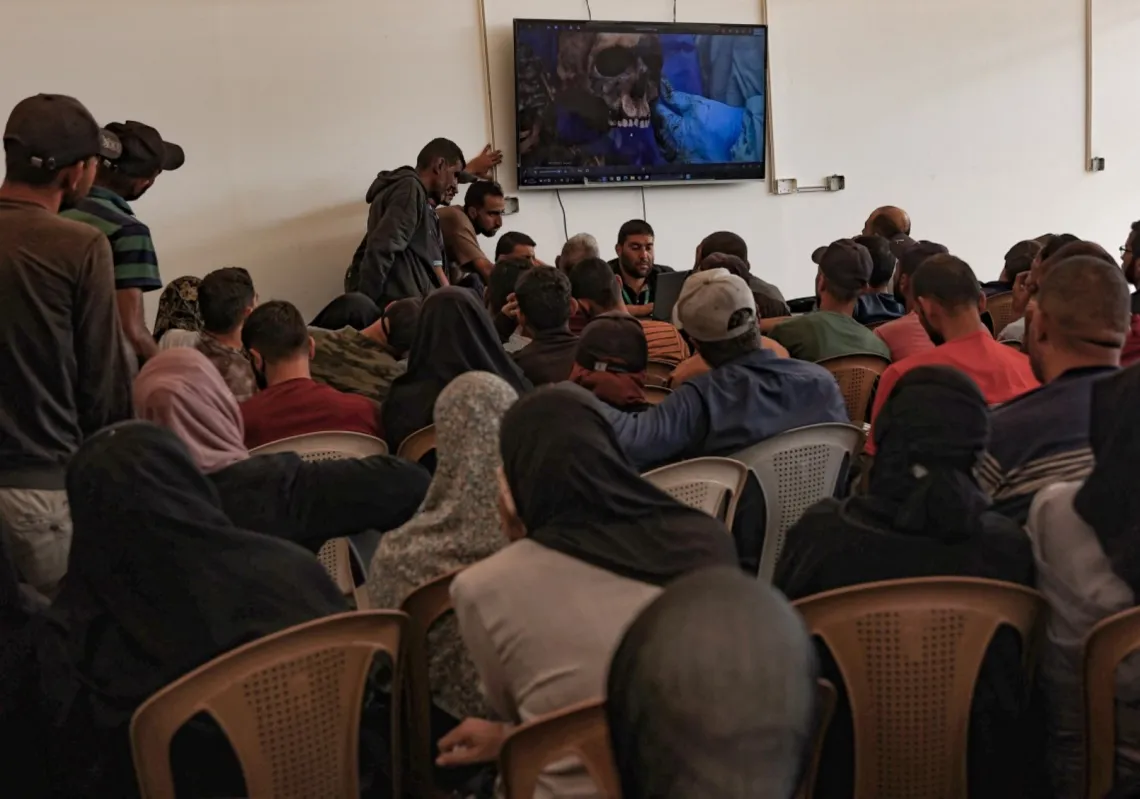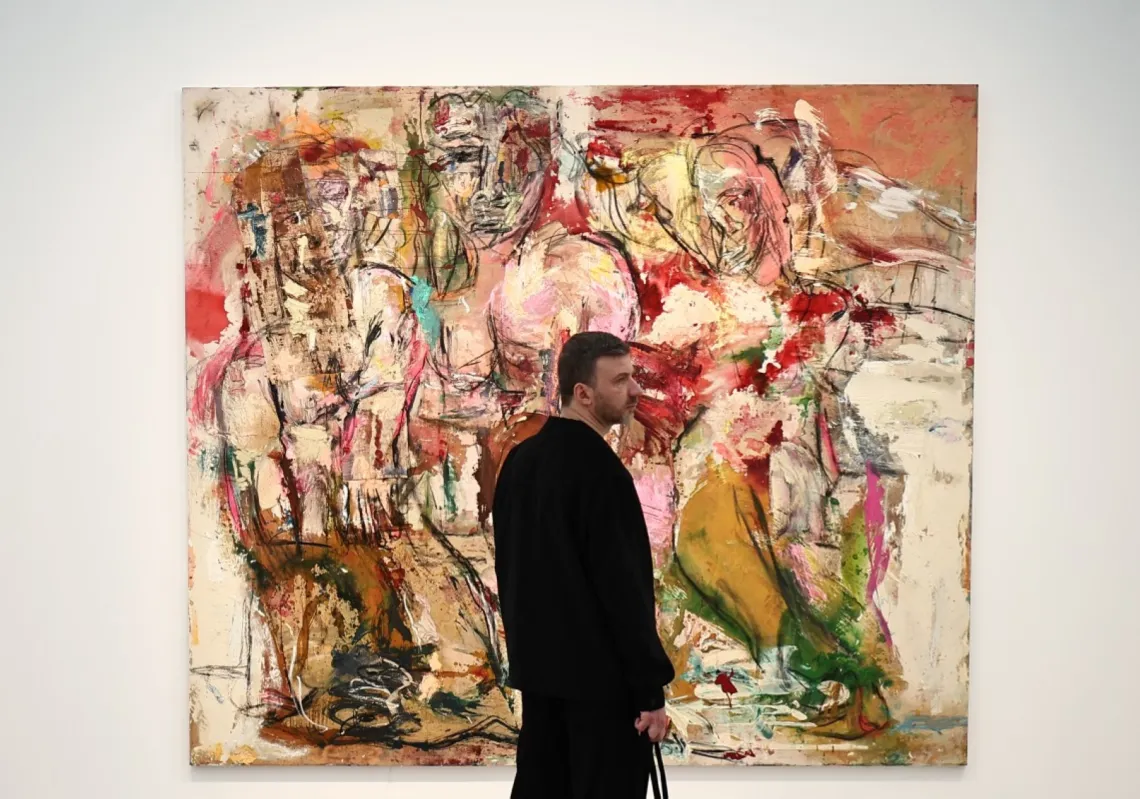 Opposition supporters with a cutout figure depicting Prime Minister Dmitry Medvedev participate in an anti-corruption rally in central Saint Petersburg on March 26, 2017.
Opposition supporters with a cutout figure depicting Prime Minister Dmitry Medvedev participate in an anti-corruption rally in central Saint Petersburg on March 26, 2017.Thousands of Russians demonstrated across the country on March 26 to protest at corruption, defying bans on rallies which were called by prominent Kremlin critic Alexei Navalny -- who was arrested along with scores of others. Navalny called for the protests after publishing a detailed report this month accusing Prime Minister Dmitry Medvedev of controlling a property empire through a shadowy network of non-profit organisations.
/ AFP PHOTO / Olga MALTSEVA (Photo credit should read OLGA MALTSEVA/AFP/Getty Images)[/caption]
by Maia Otarashvili*
It was exactly two years ago that a beloved Russian opposition leader, Boris Nemtsov, was tragically murdered in the streets of Moscow, essentially putting an end to any meaningful opposition to Vladimir Putin’s regime. But on March 26th, in a nation-wide anti-corruption protest, thousands of Russians reminded the world that dissent isn’t yet entirely dead in Russia. Since Nemtsov’s murder, Russians have protested in small groups and through small actions, but the country hasn’t seen uprisings of this magnitude in a long time.
Russia is infamous for its rampant corruption: it ranks 131 out of 176 on Transparency International’s Corruption Perceptions Index (for context, on the same index the US is at 18, the UAE is at 24, Jordan is at 57, Saudi Arabia is at 62, Greece is at 69, and Turkey is at 75). In terms of its corruption levels, Russia shares its ranking with Iran and is in a slightly better standing than Guatemala [1] and Nigeria [2], both at corruption index of 136.
This type of institutionalized corruption in Putin’s government isn’t news for Russians or the rest of the world. So, what caused the anti-corruption uprisings now? The protesters were inspired by the work of Russian activist, blogger, and lawyer, Alexey Navalny, who posted a 49-minute YouTube video, outing the vast corruption and stolen wealth of Russia’s former president and current Prime Minister Dmitry Medvedev. As of April 3, the video has been viewed 17.6 million times on YouTube. After seeing the video and without obtaining permits from city authorities, thousands of Russians in over 90 cities and 11 time zones took to the streets in protest on March 26. While state-run media completely ignored the protests, social media accounts and online blogs, like the Medusa Project, actively covered the events.
Alexey Navalny, who spearheaded the protests, has been in the opposition since 1999, when he joined the Yabloko party, a party of liberals which became greatly marginalized under Putin’s government since 2000, and which eventually lost all of its seats in Duma. He is known for his anti-corruption efforts and fearlessly and publicly voices his distaste for the Putin government, usually backing up his claims with well researched evidence and fascinating stories of high-level government corruption. But Navalny is a controversial character. On the one hand, he is oftentimes deemed a hero for standing up to Vladimir Putin’s regime; Time has even called him Russia’s Erin Brokovich. But on the other hand, Navalny has been compared to Julian Assange of the WikiLeaks by the New Yorker, and an article by Salon recently described him as a Neo-nazi sympathizer and xenophobe. While the world may not agree on Navalny’s true colors, the recent protests have proven that he, unlike any other recent Putin critic, has power and influence over the Russian people. He has already declared that he will run for president in 2018, an election that is supposed to be an easy landslide win for Putin. It is likely that the authorities will keep Navalny from running, or he will end up in prison, or live in exile like so many of Putin’s opponents whose lives have been threatened after standing up in opposition to the current regime. However, even the concept of Navalny can jeopardize the stability of Putin’s regime.
Thus, just as expected, Navalny was arrested alongside 1,000 protesters. In response to the widespread protests, the government launched an anti-protest campaign so brutal that the follow-up protests since March 26 were described as a “whimper” by a recent Washington Post article. The government even closed off Pushkin Square in Moscow, the center city space where the March 26 protests took place. Moscow city authorities said they were repairing the Pushkin statue which had served as a centerpiece for the Moscow protests. Navalny’s colleagues at his Anti-Corruption Foundation were detained by the authorities, and Navalny was sentenced to 15 days in jail. He is currently on five-year probation on trumped-up charges of siphoning money off a lumber sale, although the verdict was declared unlawful by the European Court of Human Rights. Thus, unsurprisingly, many believe that the most recent charges could eventually land him in jail for a number of years.
[caption id="attachment_55253282" align="aligncenter" width="2835"]
 MOSCOW, RUSSIA - MARCH 26: Police officers detain anti-corruption campaigner and opposition figure Alexei Navalny during an opposition rally on March 26, 2017 in Moscow.
MOSCOW, RUSSIA - MARCH 26: Police officers detain anti-corruption campaigner and opposition figure Alexei Navalny during an opposition rally on March 26, 2017 in Moscow.(Photo by Evgeny Feldman for Alexey Navalny's campaign / Handout/Anadolu Agency/Getty Images)[/caption]
Kremlin has ignored the corruption allegations, but has not shied away from condemning the protests. On March 30, in a speech in Arkhangelsk, Putin warned against “unsanctioned” protests and reiterated a sentiment that he has been using to his advantage for years: mass protests could lead to chaos, just like they did during the Arab Uprisings.
"We well know, and I want to direct your attention to the fact, that this instrument was used in the beginning of the so-called Arab Spring. We know very well what this led to, to what bloody events it led to in this region … We likewise know very well that this was one of the inciting motives and pretexts for the coup d’état in Ukraine. We also know well into what chaos these events sunk our neighbor, Ukraine."
This narrative has been an effective one for President Putin in discouraging Russians from protesting and urging them to put up with any grievances they may have with their government, as Syria-like chaos could be the alternative. Putin has been using the cases of failure after the Color Revolutions (popular uprisings in Georgia, Ukraine, Kyrgyzstan, Azerbaijan in the early 2000s), and later the Arab uprisings, to warn Russians against staging mass protests. He recently added Ukraine to that list of examples of how revolutions lead to “freedom in chaos”. Ironically, the Kremlin itself has direct involvement in Ukraine’s war in Donbas, and the Syrian civil war - two of Putin’s favorite examples of how bad things are likely to happen if people overthrow their governments.
But now, it looks like this familiar narrative may no longer keep disillusioned Russians from taking to the streets. Will Navalny manage to stay out of jail while openly opposing the government? Will Russians conquer their fear of persecution and continue to protest in the streets? It seems that Kremlin still has some opposition left to quash.
[1] Guatemala’s high level corruption has become so institutionalized, that in 2015 Guatemala’s president and vice president were arrested for overseeing an entire customs fraud network.
[2] Nigeria’s rampant corruption has been so damaging to the country, that its vice president recently said that it even caused a Boko Haram insurgency.
*Maia Otarashvili is Research Fellow and Program Manager of the Eurasia Program at the Foreign Policy Research Institute in Philadelphia. She holds an MA in Globalization, Development, and Transitions from the University of Westminster in London, UK. Her current research is focused on the post-communist countries of the Eurasia region, including the Black Sea and Caucasus states.









